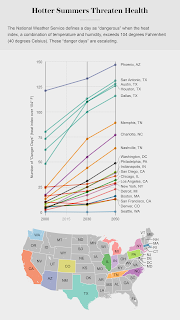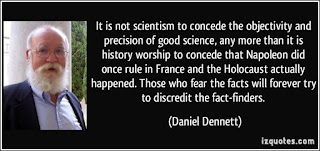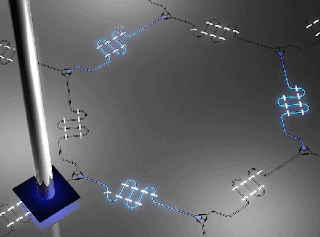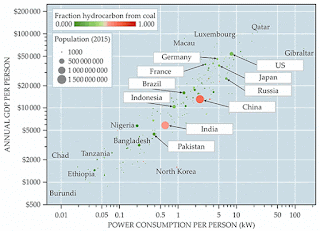Stronghold
by Jessica Cage
Her afro had chunks of gray flesh accompanied by a thick sticky grey substance, the blood of the alien beast she had just cut down. She caught a quick glimpse of herself, a reflection in a darkened window and smiled hungrily. Ranish had just taken out three Larken with no assistance from her team who were still in route and she had no intent of stopping. The war was underway. They'd gotten word in advance of the approaching vessels and were able to get most to safety. Ranish was a fighter, one of the best and now, in the midst of battle, was her when she really got to show out.
“Ra, let's go!” Her commander called to her and she moved back into action cutting down another of the slimy beasts on her way. The Larken were hideous things, nine legs that lined their circular bodies, the front most acted as a weapon to stab its enemy and inject it with a deadly toxin. The key was to get beneath it. The common attack was long range, this often proved ineffective as the hard outer shell protected the monster from most gun fire. If the shooter wasn't skilled, they were ineffective and likely the next item on the meal plan. Just underneath the exoskeleton was a soft underbelly, the monsters’ weak spot. Ranish easily slid beneath, blade at the ready, and slit each one from ass to throat.
It didn't bother her, the mess of the slaughter. She actually enjoyed the close up kill more than the distance shot. There was nothing better than witnessing first hand, the life drain away from her enemy. This was the method of her train which started early on in her childhood. The golden rule was to never show fear, never back away from what you needed to do. To show fear, to let your enemy know that you were afraid, was to present a weakness. The day Ranish let fear control her actions on the battlefield would be the day she would lay down her weapons for good.
Her tactic was made easier knowing that her opponents were mindless creatures with no real skill for fighting and nothing driving them but their foundation of death. Larken were beasts that were bred for destruction. They were brought to Earth in crates and dropped from the skies. Packages that shattered and spewed forth waves of hungry beasts that caused the deaths of countless people. Their masters were the Sav, aliens from another world who had called for war with Earth some 90 years earlier. Nearly a century later and Earth was still holding on, but only just barely. The Sav knew that they were close to a victory and if Ranish and her team could help hold them off just a bit longer, their weapon would be ready to deploy. The launch would turn the tides in favor of the human population. It took nearly a century to understand the Sav’s technology but it had been replicated and their weapons would soon be able to penetrate force fields that once proved impervious. The playing field would finally be leveled.
Ranish took a higher sense of pride in her kills as her weapons were hand crafted by her father. Her tools were made from the very metal of the first Sav ship that had fallen, taken down by her father’s crew. It was stronger than any found on earth and her father made her two perfect knives and a double tipped spear that not only expanded into three points on both ends but could be detached at the middle for ease of use in combat. The weapons were lightweight which meant that they were easy to maneuver and cut those beasts like butter.
The target was the control room. It was still secure but under heavy attack. If the damn things made it inside, their city would be the first to fall, and if they allowed that to happen, others would collapse quickly after. Additional artillery was on its way, they just had to keep the center secure until the cavalry arrived. Inside those doors, a timer was counting down. Just 48 hours until the missiles would launch, 48 hours until the Sav would finally come to see that earth wasn't for the taking and the human population wouldn't just lie down and die.
War was in her blood. The only daughter of a war hero, the granddaughter of a highly awarded soldier, she had been raised, built for battle. Ranish and the captain came up on the tail end of the group of monsters trying to break through the strong hold. Three of their men lay dead in the room, the Larken fed on their lifeless bodies. Ranish wanted to make her move as soon as she took in the sight and begin to dismantle the disgusting things limb by limb. The captain, who knew exactly where her mind was going, signaled her to hold. The rest of her team was coming. They were grossly outnumbered and needed as much backup they could get. She wanted to rush forward but held her position. She wouldn't get expelled from duty for not following a simple command.
Three long minutes later, backup arrived. Three men joined them; Jemal, the tech, Lex, the shooter, and Tone, that strategist. Together with Ranish, they were the top of their class, the best of the best and hand-picked by the Captain to fight by his side. It had been nearly a decade that their team operated together, a single unit protecting their home. Their first outing, Ranish had proved herself among the team of men and had earned their respect when she saved Lex from two Larken who had him cornered. She often wondered if the Captain had put them in that situation for that very reason. From that moment forward, she never felt anything but camaraderie and a sense of family, a welcome feeling after the death of her mother and father.
She was away at training when it happened. Bombers took out a nearby city, but masses of Larken fell right on top of them. Her father was bombshell ready but they weren’t prepared for the Larken. The doors closed, but it was too late, one of the damn things had made it inside. It was the first time those beasts were dropped and they took her parents from her. Ranish did everything she could to never think of her parents last moments alive.
Eagerly she waited for the signal to move forward. Her job was always the same. Take down as many of the damned things as possible. Keep moving, keep killing. Two silent taps the captain's right thigh was her confirmation. Show time.
It was instantaneous, the transformation that happened almost like the flip of a switch. Skilled killer emerged and like a ballet of bloodshed she moved through the mass of alien intruders. Lex was on her flank making sure that she wasn't taken by surprise. Jemal and the captain headed for the main panel. The secondary wall of defense to the control panel had jammed and they hoped like hell that their tech guy would be able to get the damned thing closed. Once there, Jemal was protected as he worked.
Ranish kept in motion. More Larken were coming, the pounding of clawed feet hitting the ground sounded like a storm of hail rushing in their direction. It didn't matter what was coming, all that mattered was what they were already facing. The screeching cry of the beast as she dismembered the back two legs gave her pleasure and motivation to keep moving.
“Jemal, get that door shut!” Ranish yelled out as she finished another kill. The floor had become slick with the blood that spilled from the dying bodies of the Larken.
“I’m almost there; just hold them off a bit longer!”
Tone and Lex took the lead, with the immediate threat subdued; it was their time to keep the approaching threat at bay. Long range fire arms which shot out nets of lasers take down groups of the beasts at once but they are still coming and their line is quickly closing in.
Ranish fell back; she caught her breath while taking inventory of the slaughter on the floor. Anything that twitched got another blow from her spear. Too many times she had seen someone lose their life because they didn't take the time to make sure their kills were clean and final. She never claimed her victories until she was sure the job was done.
“They’re closing in Jemal! Tell me you found gold.”
“Just give me one more minute!”
Ranish looked out the approaching herd. The beasts were nearly at their door. She took a deep breath and centered herself. She would go down fighting. She lifted the spear and engaged the release to turn one into two. Holding the weapons at her side, she stared ahead. The thunderous sound of the Larken approach was now paired with strong tremors in the floor.
“As soon as that door closes, hit the kill switch! All of those bastards will burn!” Jemal told the Captain who left his side to access the panel just a few feet away. He lifted the glass casing that protected the controls. His hand hovered just above the switch, his eyes were trained on the door.
There were just a few yards left between them and the threat. Tone and Lex were doing their best to hold the line back, but there were just too many of them to shoot down. Those yards turned into feet and their hope of securing the control room diminished.
Just as Ranish centered herself, ready to flip her internal kill switch, the doors initiated and begin to slide shut. Three of the bastards managed to get in before it closed. The Captain slammed on the kill switch and the cries of the Larken rang out and echoed the sounds of their monster brothers who managed to make it inside. The smell of burning flesh seeped into the room through small overhead vents as once again Ranish confirmed her kill. Lex did the same with the two he had taken out.
“Yeah!” Tone high-fived Lex who hooted his excitement, the two did their usual battle field dance as Ranish and Jemal laughed.
“Let’s not get too excited.” The Captain patted a sweat covered Jemal on the shoulder. “We still have to keep this room secure for the next 17 hours. Once that missile launches, then we celebrate.”









